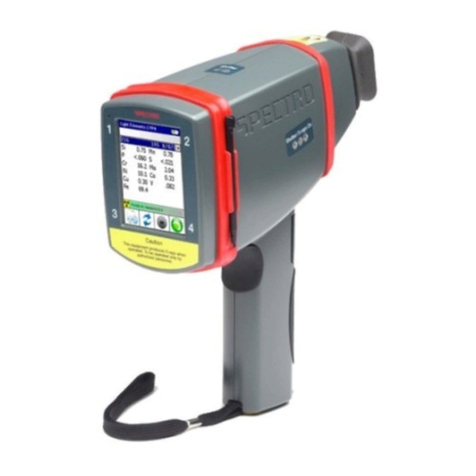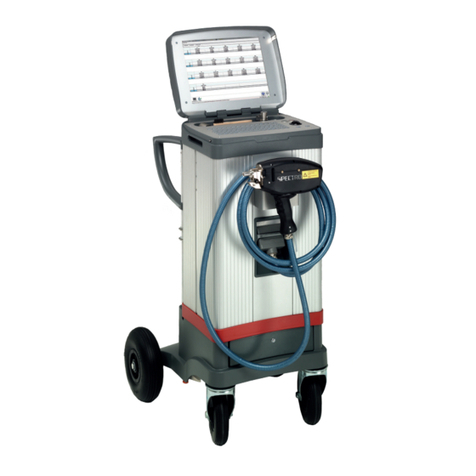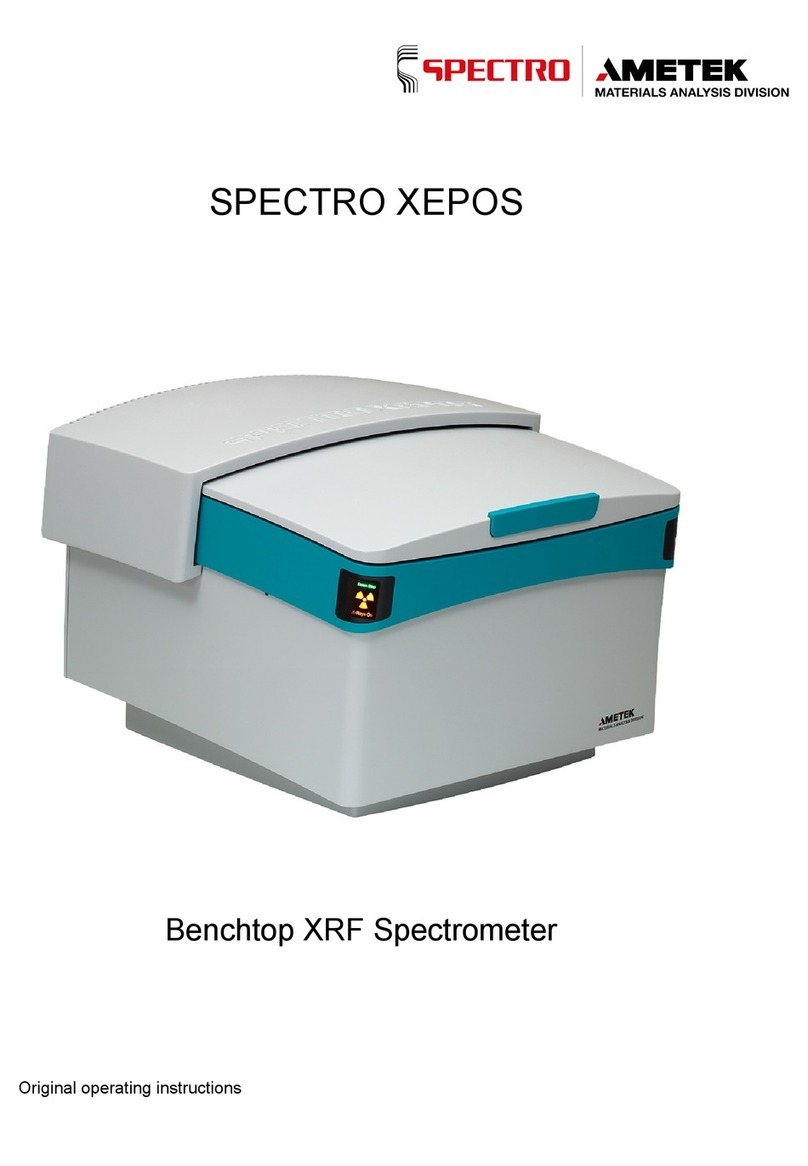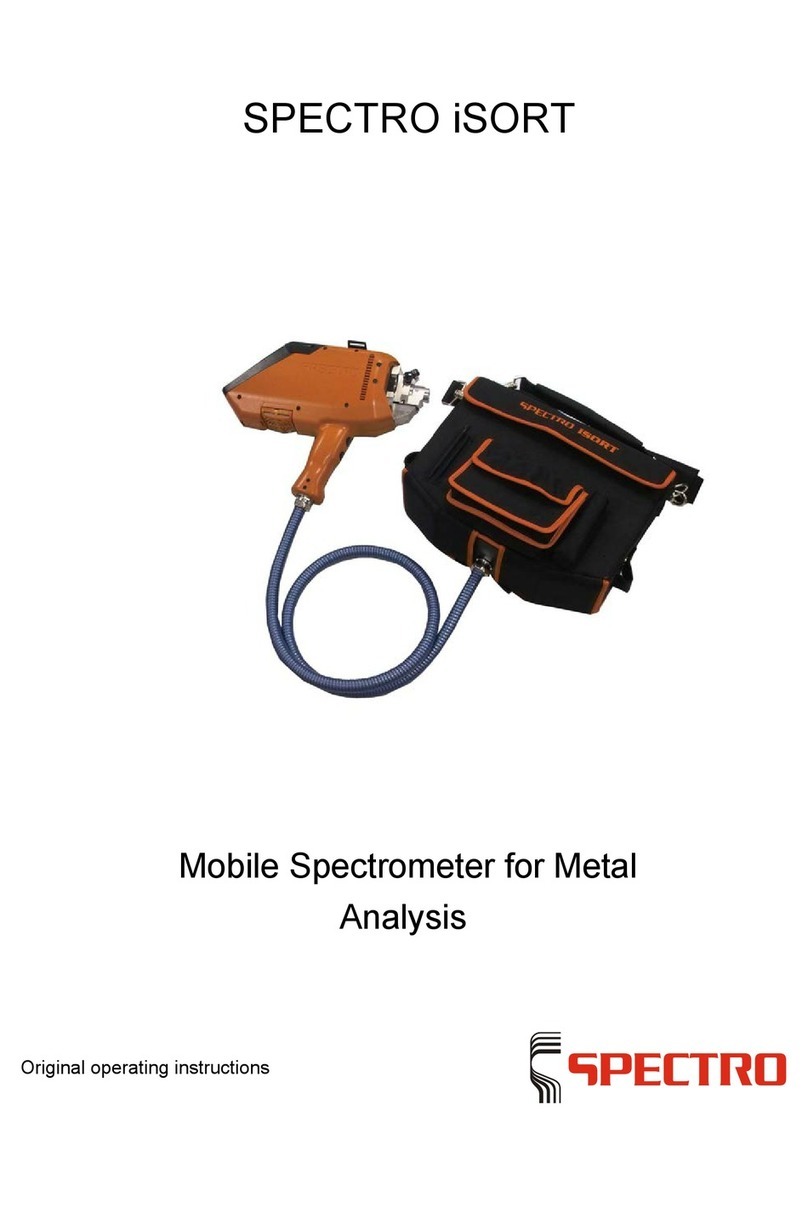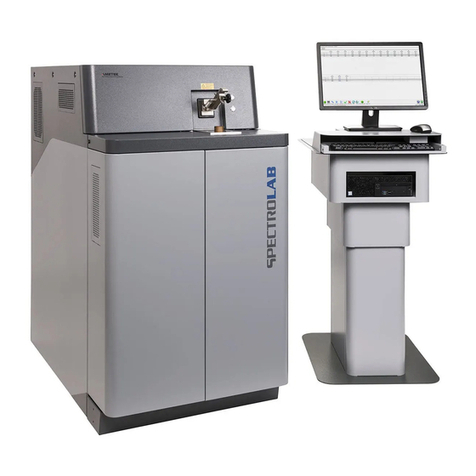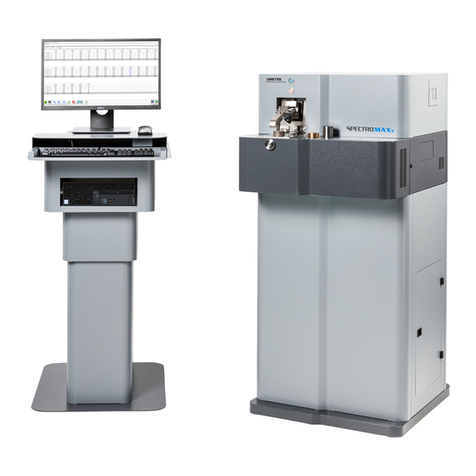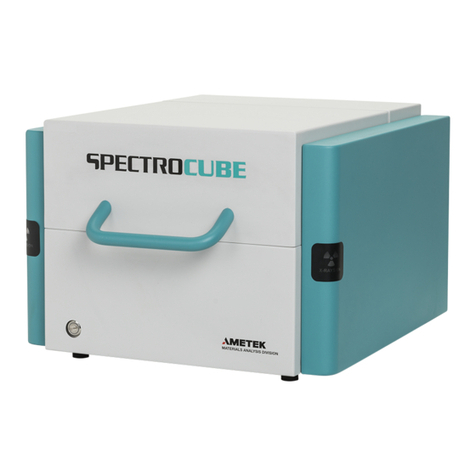
SPECTROSCOUT — 07.09.2015 — 3
Table of Contents
1Description of instrument ....................................................................................5
1.1Description .......................................................................................................................... 5
1.2Function .............................................................................................................................. 5
1.3Overview ............................................................................................................................. 6
1.3.1Configuration ......................................................................................................... 6
1.3.2Instrument.............................................................................................................. 7
1.4Lithium battery .................................................................................................................... 8
2Safety................................................................................................................10
2.1Symbols used ................................................................................................................... 10
2.2User information................................................................................................................ 11
2.3Intended use ..................................................................................................................... 12
2.4Prohibited operating conditions ........................................................................................ 12
2.5Residual risks.................................................................................................................... 12
2.6Radiation protection advice .............................................................................................. 13
3Technical data...................................................................................................14
4Transportation/Setting-up .................................................................................15
4.1Set-up ............................................................................................................................... 15
4.2Use.................................................................................................................................... 15
4.3Transport........................................................................................................................... 16
4.4Gas supply (optional)........................................................................................................ 17
4.5Vacuum (option)................................................................................................................ 17
4.6Sample spinner (optional)................................................................................................. 18
4.7Notebook (optional)........................................................................................................... 18
5Initial start-up ....................................................................................................19
5.1Preparing the instrument for use ...................................................................................... 19
6Operation ..........................................................................................................20
6.1Overview of controls ......................................................................................................... 20
6.2Switching on the instrument.............................................................................................. 21
6.3Switching offthe instrument............................................................................................... 22
6.4Displays ............................................................................................................................ 23
6.4.1Instrument............................................................................................................ 23
6.4.2Screen ................................................................................................................. 24
6.4.3Notebook (optional) ............................................................................................. 24
6.5Measuring procedure........................................................................................................ 25
7Maintenance by the operator ............................................................................27
7.1Operator maintenance plan .............................................................................................. 27
7.2Standardizing the measuring device (ICALization)........................................................... 28












